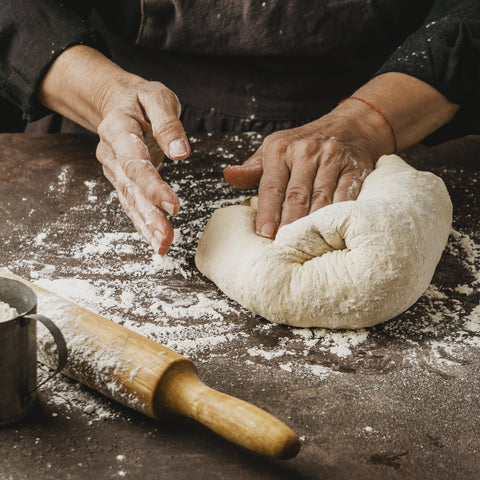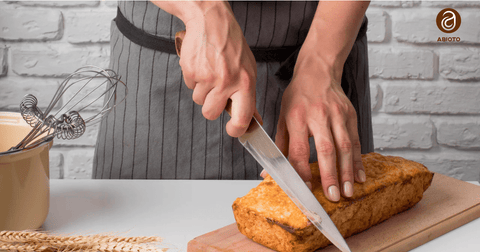How to Take Care of Your Sourdough Starter: Making the Best Bread Possible
Sourdough starter is a living culture of wild yeast and bacteria that gives sourdough bread its characteristic tangy flavor. It's essential to begin with a healthy starter, but sometimes, it can go bad. Learn how to keep your sourdough starter alive so you can make delicious bread, and how to tell if your sourdough starter is bad.
How to Use Sourdough Starters
To make a sourdough starter, mix flour and water and let them sit for a while. This allows good bacteria and wild yeast to grow. The yeast makes the bread rise, and the bacteria contribute to the sour taste. To keep your sourdough starter healthy and active, feed it regularly and take good care of it.
Signs That Your Sourdough Starter Isn't Working Right
-
Smell
One of the first signs that your sourdough starter isn't working properly is a foul odor. If it smells like vomit, rotten eggs, or something else sour that's not the usual tang, the culture has been overtaken by harmful bacteria. A healthy sourdough starter should only have a faint, pleasant sour smell. -
Changes in Color
A good starter should be white or brown, depending on the flour used. If your starter has turned pink or orange, or has mold, it is no longer safe to use. -
Too Much Hooch
If you see a layer of liquid on top of the starter, known as hooch, it usually means the starter is hungry. If the starter becomes too watery or runny and isn't bubbling properly, it may be losing its vitality. -
Strange or Lumpy Texture
A healthy starter should be thick, sticky, and smooth. If it becomes dry or lumpy, it might not work as effectively.
How to Fix a Sourdough Starter That Isn't Working
If your starter has stopped working but doesn't have a bad smell or show signs of mold, you may be able to revive it with a little care:
-
Remove any excess liquid, or hooch, that has accumulated on top.
-
Keep only a small portion (about 50 grams) of the starter and discard the rest.
-
Add water and new flour to the remaining starter. Rye flour is full of nutrients, so try using it to boost activity. After mixing equal parts flour and water, let it sit at room temperature.
-
Continue feeding every 12 hours until the starter starts to bubble and grow.
How to Take Care of Your Sourdough Starter
Feeding Your Starter
To keep your sourdough starter alive, feed it new flour and water regularly. If you discard 100 grams of starter, add 50 grams of flour and 50 grams of water. This is the usual weight ratio. Feeding your starter frequently helps maintain the balance of bacteria and yeast in your culture.
Choosing the Right Container
Store your sourdough starter in a glass or plastic container that is safe for food. Avoid using metal containers as they may react with the acidity of the starter. Make sure the container is at least twice as large as the starter to allow room for growth.
Tips for Storage
If you don't bake often, store your sourdough starter in the fridge. This slows down fermentation, keeping the culture alive without needing daily feedings. However, if stored in the fridge, make sure to take it out and feed it at least once a week.
How to Tell if a Sourdough Starter is Good for You
-
Signs in the Texture
A healthy starter should be bubbly and have air pockets. If your starter isn’t bubbly or hasn’t grown in size within a few hours of feeding, it may need more time to develop. -
Smell and Taste
Your sourdough starter should have a nice, slightly sour smell and should taste tart, but not overly sour. The taste of a healthy starter is complex and mildly tangy. -
Dependability
A healthy starter should be thick and sticky, similar to pancake batter. It shouldn’t be too thick or too runny.
How to Give Your Starter More Sourdough
-
Discard some of your starter to prevent it from getting too large.
-
Mix equal parts flour and water with the remaining starter.
-
Let the starter sit at room temperature for a few hours to activate.
Conclusion: How to Keep Your Sourdough Starter Healthy
To maintain a healthy sourdough starter, you need to feed it regularly, store it properly, and not forget about it. By recognizing the signs of a bad starter and knowing how to bring it back to life, you can always ensure that your bread turns out great. To be successful, feed your starter regularly, store it correctly, and use high-quality ingredients like unbleached flour.
It’s possible to revive a sourdough starter with care and time, but it may take some effort. If your starter hasn't shown any activity after a few days, it might be time to start a new one. For great bread with a good rise and flavor, a strong and healthy starter is key to successful sourdough baking. By reviving a bad starter, you can continue enjoying the benefits of sourdough baking while saving time and money.




Comments (0)
There are no comments for this article. Be the first one to leave a message!